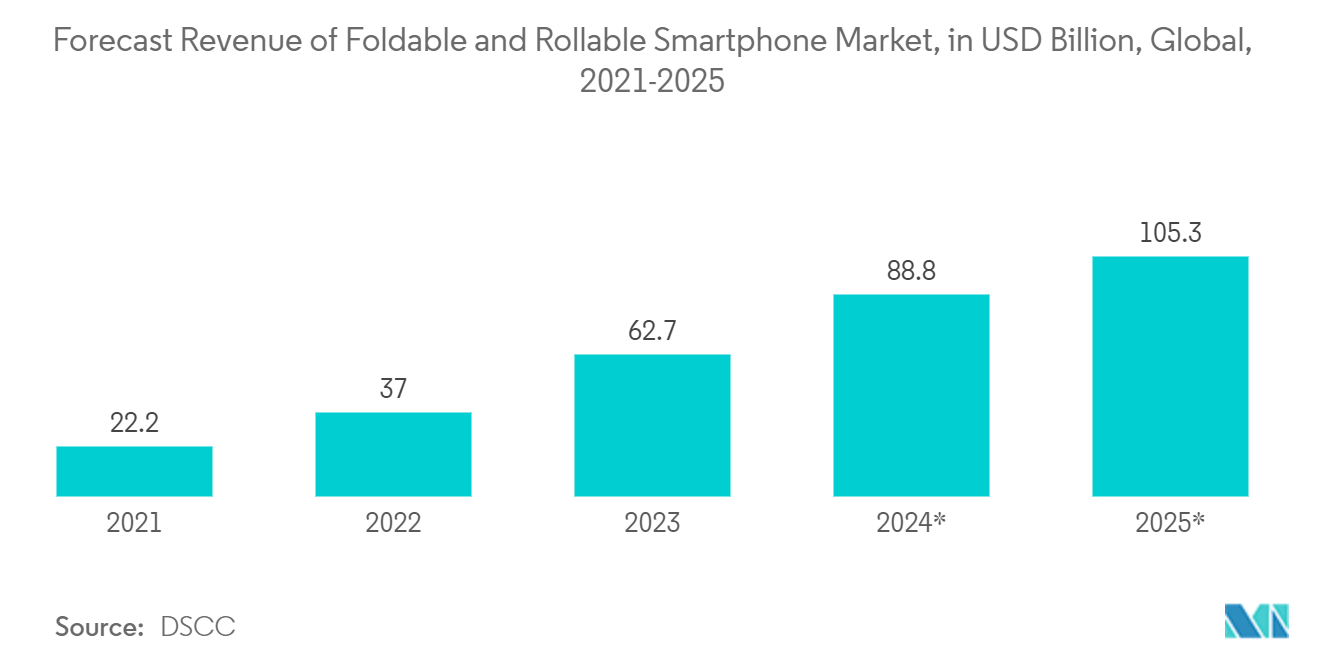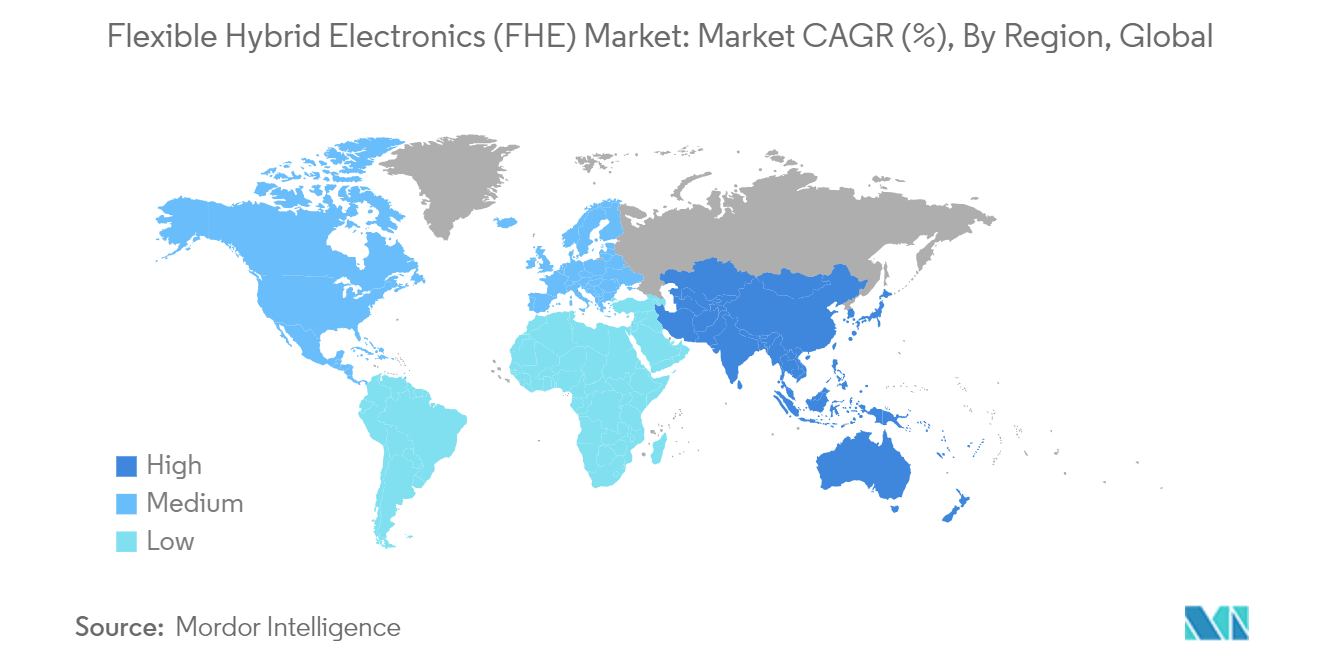Market Trends of Flexible Hybrid Electronics (FHE) Industry
Electronics Application Segment Holds Significant Market Share
- The electronics segment, including sensors, displays, and lighting, in the flexible hybrid electronics (FHE) market scope includes thin fingerprint sensors, printed antennas to test water salinity, and printed LED lighting.
- Flexible hybrid electronics (FHE), a blend of flexible and printed electronics, is gaining momentum for its advantages, including digital additive manufacturing for prototyping, flexibility and stretchability, and compatibility with Roll-to-Roll (R2R) production. FHE merges printed electronics with silicon-based integrated circuits on a flexible substrate. Notable active components from Si CMOS processes include microcontrollers, digital signal processors, high-density memories, and radiofrequency (RF) chips.
- Flexible hybrid electronics is revolutionizing consumer electronics with flexible displays, rollable screens, flexible batteries, and electronic textiles. These advancements lead to more durable and versatile devices. There's a shift in consumer electronics toward ultra-high resolution, paving the way for high-resolution displays, flexible screens, and intricately designed LED lighting. The heightened resolution enhances visual appeal and functionality, enriching the user experience.
- By geography, North America is set for a surge in its electronics sector. In June 2024, the NextFlex consortium, a collaboration between the US Department of Defense (DoD) and FlexTech Alliance, unveiled a new funding opportunity of USD 5.3 million. This initiative aims to accelerate the commercialization of flexible hybrid electronics (FHE) in the United States.
- In May 2024, NextFlex released Project Call 9.0 (PC 9.0), a funding initiative with a total value exceeding USD 11 million. This brings NextFlex's total investment in hybrid electronics advancements to a substantial USD 143 million since its inception. PC 9.0 specifically focuses on enhancing the performance and reliability of hybrid electronic devices.
- The market for flexible and foldable displays is growing significantly, with technologies like micro-LEDs gaining prominence alongside OLEDs. While micro-LED displays offer exceptional quality, their manufacturing is challenging. According to DSCC, the global market for foldable and rollable smartphones witnessed a revenue surge, increasing from USD 4.5 billion in 2020 to USD 5.5 billion. Projections indicate a substantial uptick, with the market poised to exceed USD 105 billion by 2025, reflecting an impressive compound annual growth rate (CAGR) of over 80% from 2020 to 2025.

Asia-Pacific to Register Major Growth
- The Asia-Pacific region, including semiconductor hubs like China, Taiwan, and Japan, hosts many pure-play foundries operated by domestic and international vendors. Chengdu, China, for instance, has a comprehensive industrial cluster, advanced technology for new material production, a vast consumer market, and a strong R&D foundation, especially for high-performance materials.
- The region also holds a significant share of global demand for connected wearables and is one of the fastest-growing markets. Countries like China, Japan, and Singapore are seeing increased demand for flexible smartphones and consumer electronics. The Japanese electronics market is focusing on miniaturizing products with flexible hybrid electronics.
- Consequently, companies like Samsung, LG, and Apple are launching flexible smartphones exclusively in the region. Chinese vendors are innovating by collaborating with universities and research institutes. For example, Tsinghua University researchers developed ultra-thin flexible chips, less than 25 micrometers thick, that can be embedded in various materials on flexible substrates.
- In December 2023, Chengdu Hi-tech Industrial Development Zone (CDHT) hosted the China Flexible Electronics Industry Development Conference and the 4th ‘Golden Panda’ Global Flexible Electronic Industry Innovation and Entrepreneurship Competition. The event aimed to bolster industrial ecosystems and propel Chengdu's FHE sector. CDHT leverages industrial investment funds to integrate capital and industry chains. By 2027, CDHT plans to roll out RMB 300 billion (USD 413.7 billion) in industrial funds, attracting diverse industry collaborators. Flexible hybrid electronics are crucial for China's self-reliance and technological strength. CDHT aims to establish an exchange platform to consolidate technologies and projects in the FHE industry chain.
- The Chinese FHE industry gained global prominence, as noted by the Flexible Electronic Industry Development Alliance. To capitalize on this, China must plan its industrial layout, establish the "China Carbon Valley" base, focus on core technology research, enhance top-level design, and leverage its flexible hybrid electronics talent.


